SUMMARY
This is AI generated summarization, which may have errors. For context, always refer to the full article.
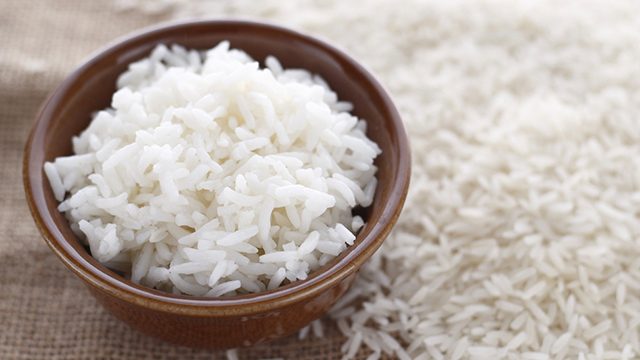
Who doesn’t love white rice?
A staple to almost every Filipino’s diet, this well-loved carbohydrate is the best pairing to almost every favorite national dish – adobo, sinigang, inasal, you name it – making rice a non-negotiable for many.
However, white rice, as delicious at is, in excess can be detrimental to one’s health, especially for those diagnosed with diabetes.
For the sick and the health-conscious, it’s time to think twice about our favorite partner to our favorite saucy and salty Filipino dishes. Don’t worry, though – we have 10 healthy (and delicious) alternatives to rice available here in the Philippines!
Adlai
Many are not aware that this heirloom grain can give 3 times more energy than regular white rice and is locally grown in the Philippines.
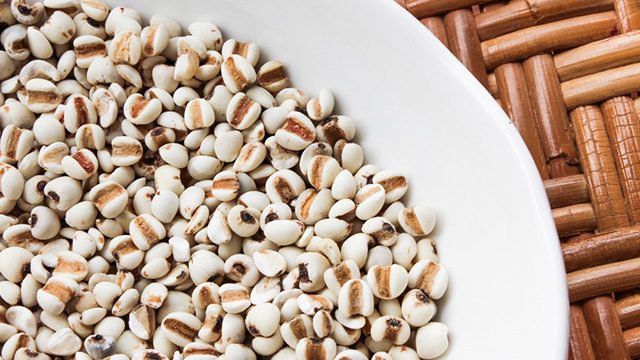
Although adlai contains a higher caloric content than rice, rest assured that these are clean calories as this powerhouse grain packs a combo punch of protein, dietary fiber, and minerals such as phosphorus, niacin, riboflavin, and thiamine.
For those watching their sugar levels, this grain is also being used in traditional Chinese medicine for its anti-inflammatory properties and its capacity to lower blood sugar levels.
Taste: It’s close to an al-dente risotto or noodle, with a nice, firm, chewy bite. It is generally tasteless, making it an A+ pair for tasty ulam and a good base for flavored rice, salads, and even pasta dishes.
Cooking method: You can cook adlai just like you would regular white rice – one part adlai with two parts water, and then simmer for 30-40 minutes until cooked. If you want softer grains, add more water. Try it out in a rice cooker, too!
Where to buy: Adlai isn’t commercially available in all supermarkets just yet, but it can be bought online from local stores such as Hineleban Cafe and ECHOstore.
Brown rice
It may not be as soft and sweet as its white counterpart, but the health benefits of brown rice weigh more than the taste.
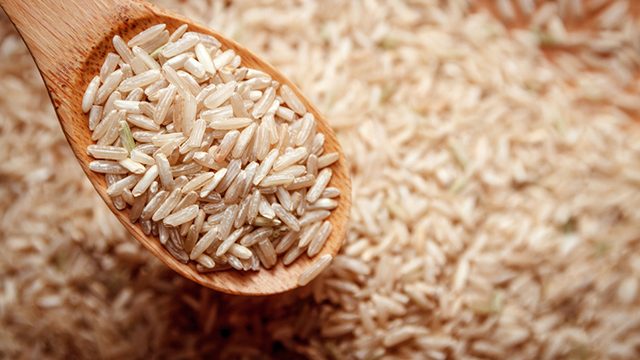
According to Harvard, the glycemic index of brown rice is at 68 ± 4 compared to that of white rice at 73 ± 4, which is more favorable for diabetics.
Also, white rice has been stripped of its nutrients, while brown rice continues is the whole rice grain with a fiber-rich bran, the nutrient-packed germ and the carbohydrate-rich endosperm.
Where to buy: Brown rice is readily available in most supermarkets alongside its white counterpart.
Red rice
Red rice is known to have the same profile as brown rice – un-hulled and nutritious. But it just gets its color from anthocyanins, an antioxidant found in deep purple or reddish fruits and vegetables.
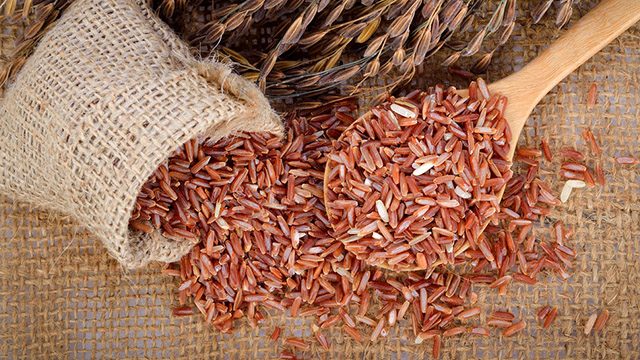
Anthocyanins is known to reduce inflammation, allergies, prevent risks of cancer and help in weight management.
Heads up, though: it may taste like the earth, but who knows – you might like its richness!
Where to buy: Just like brown rice, many supermarkets have come on board the red rice train as well.
Cauliflower rice
Looking for the best way to cut out the carbs? Look no further as one cup of the versatile cauliflower is equivalent to only 25 calories!
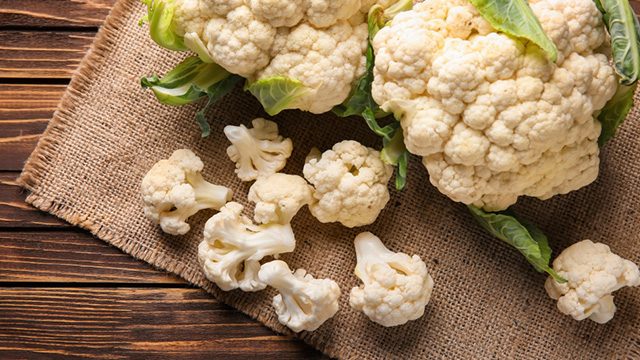
Cauliflower rice gained popularity after being identified as the best rice substitute for those on a paleo diet, while providing both vitamins and minerals to keep you going through the day.
The best bonus? It tastes really good!
Taste: Cauliflower’s florets (the “heads”) are the best part – they’re crunchy, mild, and can be cooked in a variety of ways: steamed, grilled, roasted, sauteed, baked, and even as rice or a soup. They also taste great with other “guilty pleasure” ingredients, like butter and cheese. Just watch your intake!
Cooking method: You can boil salted water in a pan and steam the florets with a lid on for 3-8 minutes, depending on how crunchy or soft you want them.
To make cauliflower rice (a deliciously crisp substitute to white rice), just grate your raw florets into tiny, rice-like bits, and then saute them over medium heat with oil. You can use a lid to steam, if you prefer softer consistency. Stir occasionally, season as desired, and add any extra ingredients (tomatoes, onions, garlic, salt, and pepper work best)!
Sweet potato
Having trouble satisfying your sweet tooth cravings while on a diet?

Your local kamote can help quell your hunger and sugary wants by using it as a rice substitute. Not only is it naturally sweet and creamy, kamote is abundant in fiber and complex carbohydrates, which will also stabilize your blood sugar.
One of the Japanese’ secrets to long life is the addition of sweet potato to their diets, which also boosts their immunity due to high vitamin C content and vitamin A from its rich beta-carotene content. Its bright-orange color also helps to liven up your plate!
Cooking method: Just like a regular potato, boiling kamote can be done skin on or off. Boil salted water until bubbling, and leave the potatoes for 10-12 minutes or longer – depending on how tender they are when poked with a fork. You can also opt to bake them in the oven or steam them. The possibilities are endless!
Dish idea: The versatile root crop is delicious in fries form, but it’s also a great mashed potatoes substitute! Prepare it as you would regular mashed potatoes – but instead, have it with milk, brown sugar, butter, and a dash of cinammon and nutmeg.
Quinoa
Quinoa is arguably one of the most popular health foods of today. Why? Because it’s an all-in-one power grain and superfood – it’s high in fiber, rich in protein, and gluten-free.
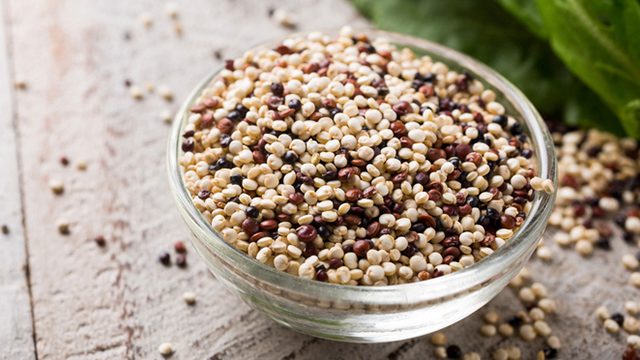
Pronounced “keen-wah,” it is actually considered an edible seed that is eaten as a grain; therefore, becoming another healthy substitute to rice. Plus, it’s easy for your body to digest!
Cooking method: Quinoa is usually cooked in a saucepan, in boiling water or flavored broth (chicken is great). Once bubbling, reduce heat to low, cover, and let it simmer for 15 minutes, or until all liquid is fully absorbed. You’ll know it’s done when the quinoa seed appears “open”.
Dish idea: You can either eat quinoa just like you would rice, or you can get creative. For a nutritious salad, mix quinoa with greens, veggies, and your choice of viniagrette. You can even use them to make a filling soup.
Where to buy: Stores around the city usually carry quinoa now, like S&R, Healthy Options, and ECHOstore. You can also find organic quinoa online, through The Healthy Grocery, The Superfood Grocer, The Green Grocer, and Gerald.ph.
Corn grits
Coming from the family of cereals, corn is made up of mostly carbohydrates, but ranks low in the glycemic index despite containing sugar. Therefore, corn grits is a good substitute (also known as “polenta” or cornmeal).
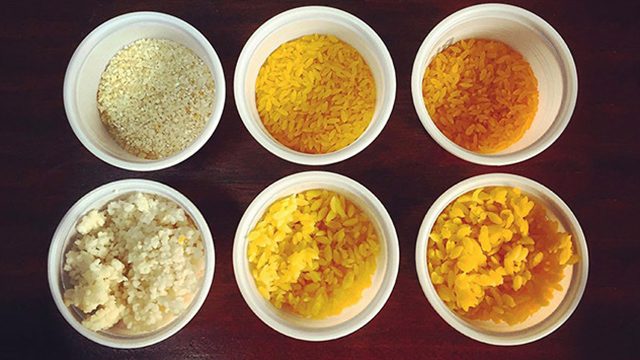
Corn is also a good source of antioxidant carotenoids – lutein and zeaxanthin – which can promote eye health, while its fiber content can keep your colon in top shape.
Cooking method: You can usually buy ready-to-cook corn grits/polenta in bags. To cook, bring salted water or broth with a boil, reduce heat, and cook slowly for 5 minutes, stirring occasionally. This’ll create a consistency similar to thick porridge or watery mashed potatoes. Feel free to add veggies, seasonings, and spices!
Where to buy: Polenta can be found in Healthy Options and Santi’s. Polenta mix can also be bought online via Shopee.
Whole wheat bread
Having a sandwich made out of whole wheat bread is perfect for an on-the-go meal for the health-conscious. Not only is it more filling and textured than the average white slice, but it’s also more fibrous and less processed.
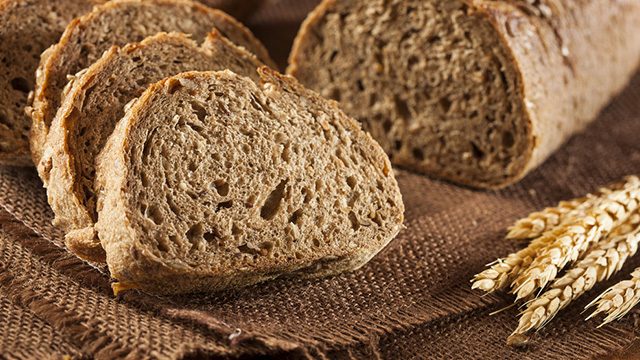
Convenience and nutrition aside – watch your intake, too! Two slices of wheat bread are equivalent to 1/2 cup of white rice in terms of calories.
Buckwheat noodles
Also known as “soba”, buckwheat noodles are another major ingredient in Japanese dishes and are just sometimes taken with a light soy dipping sauce and fresh veggies.
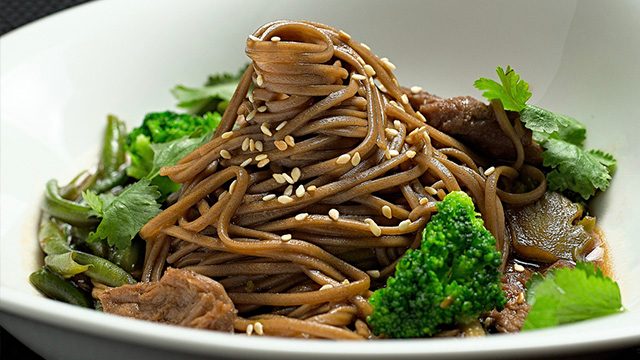
Made with wheat and buckwheat flour, soba also has a low glycemic index that can also help those who are conscious of their blood sugar.
But what separates buckwheat from whole wheat spaghetti is the rutin content, which is known to have a cholesterol-lowering effect, in part by reducing absorption of dietary cholesterol in your gut.
Cooking method: Just like regular spaghetti noodles, bring a pot of salted water to boil and cook the soba noodles until tender – roughly 3-4 minutes. Once drained, transfer them to a pot of ice water and wash them gently, removing any excess starch. Then you can have them either hot or cold!
Where to buy: Some larger groceries already carry soba in the noodles section. Shopee and BeautyMNL also carry different variants.
Couscous
Couscous are tiny steamed balls of wheat semolina, and are more refined in terms of nutrition compared to pasta noodles – but just as addicting to eat!
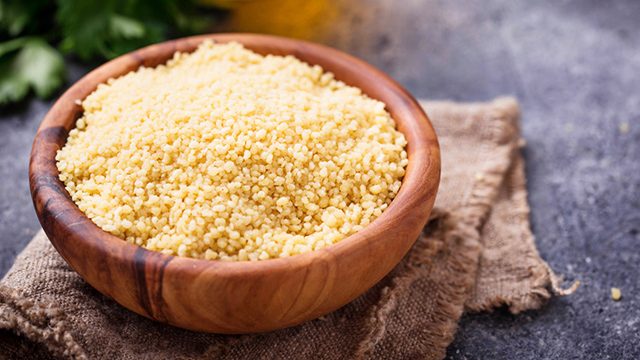
Another great thing about couscous is that it’s sugar and fat-free, and is usually whole wheat-based, so fiber levels are good. It’s also rich in selenium, which is a powerful antioxidant that helps repair your body’s damaged cells and help relieve inflammation.
Cooking method: Pour 1 cup of couscous into 1 cup of boiling salted water (butter can be added for extra moisture), remove pot from heat, stir, cover, and let it steam for 10 minutes until liquid is absorbed. Once done, fluff the grains with a fork to gently break them apart.
Where to buy: Couscous can be found in select supermarkets and specialty deli stores in Metro Manila. You can also buy it online via websites like Gerald.ph,The Green Grocer, and BeautyMNL.
Summary:
To summarize, here are all 10 rice alternatives and their respective nutrition facts in one table:
– Rappler.com
Shop for healthy alternatives with this Shopee discount code.
Add a comment
How does this make you feel?
There are no comments yet. Add your comment to start the conversation.